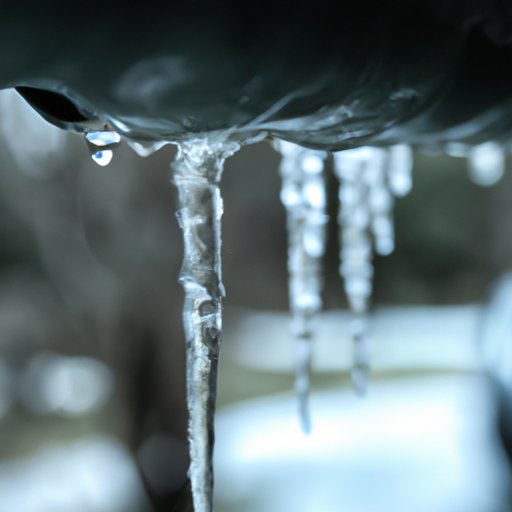Introduction
Have you ever wondered why water freezes at a certain temperature? The freezing point of water is important in many aspects of our daily life, from cooking to plumbing. Understanding the science behind water’s freezing point can improve our lives in many ways.
Understanding the Science Behind Water’s Freezing Point: Exploring the Factors That Affect It
The freezing point of water is the temperature at which liquid water turns into solid ice under a certain pressure. The standard atmospheric pressure is 1 atm (atmosphere), and the freezing point of water at this pressure is 0°C (32°F).
However, the freezing point of water can be affected by various factors, including pressure and impurities. For example, if the pressure is increased, the freezing point of water will decrease. On the other hand, if impurities are present in the water, the freezing point will be lowered due to the disruption of the water’s molecular structure.
Why Does Water Freeze? An In-Depth Look at the Phenomenon
Water is a polar molecule, meaning it has a positive and negative end. The oxygen atom is slightly negative, while the hydrogen atoms are slightly positive. This polarity allows water molecules to form hydrogen bonds with each other, creating a lattice structure in solid form.
When water is cooled, the molecules begin to slow down and lose kinetic energy. At the freezing point, the kinetic energy is low enough for hydrogen bonds to form a stable lattice, locking the molecules in place and forming solid ice.
Water’s Freezing Point: How Understanding It Can Improve Your Daily Life
Knowing the freezing point of water can be useful in many aspects of our daily life. For example, in cooking, it is important to know the temperature at which water boils and freezes to achieve optimal results. In plumbing, understanding the freezing point of water can help prevent pipes from bursting during winter months.
From Lakes to Your Freezer: Examining the Importance of Water’s Freezing Point
The freezing point of water affects not only our daily lives but also bodies of water and their inhabitants. Lakes freeze from the surface down, and the ice acts as an insulating blanket, protecting the aquatic life beneath from harsh winter temperatures. Consumer products, such as ice cream, rely on water’s freezing point to create a creamy texture.
The Secret to Ice Cubes: All About Water’s Freezing Point and Your Favorite Drinks
Water’s freezing point also plays a role in the taste and texture of our favorite drinks. If ice cubes contain impurities or minerals, they can affect the taste of the drink. In addition, using boiled or distilled water to make ice cubes can result in clearer cubes.
Cool Science: Diving into the Fascinating World of Water’s Freezing Point
There are many fun and interesting experiments related to water’s freezing point. For example, the instant ice experiment involves supercooling water by briefly cooling it below its freezing point without allowing it to freeze. When disturbed, the water instantly freezes into solid ice.
How Cold Is Too Cold? A Comprehensive Guide to Water’s Freezing Point
The temperature range in which water freezes is between 0°C and -40°C (-32°F and -40°F) depending on the pressure and impurities present. In extreme cold, it is important to prevent water from freezing to avoid damage to pipes and other equipment. Insulating pipes and keeping them above freezing temperatures can help prevent freezing.
Conclusion
Understanding the science behind water’s freezing point can improve our lives in many ways. From cooking to plumbing, and from the lakes to our freezers, water’s freezing point has a significant impact on our daily lives. By knowing the factors that affect it and how to prevent freezing in extreme cold, we can make better use of this valuable resource.
